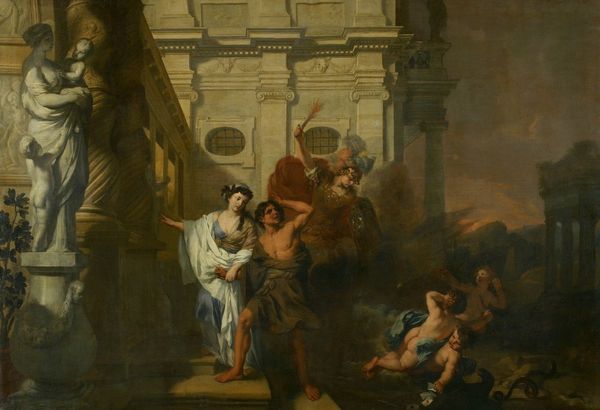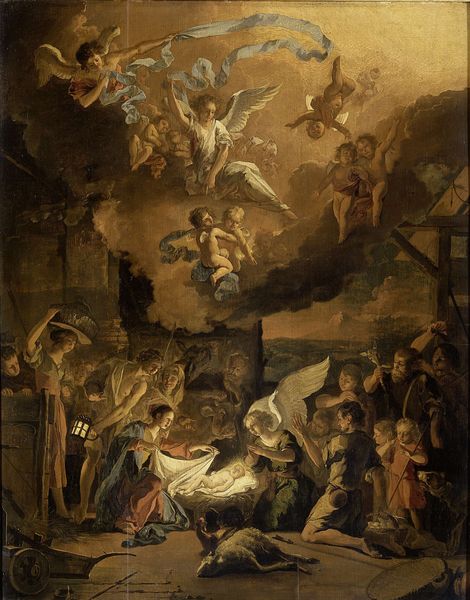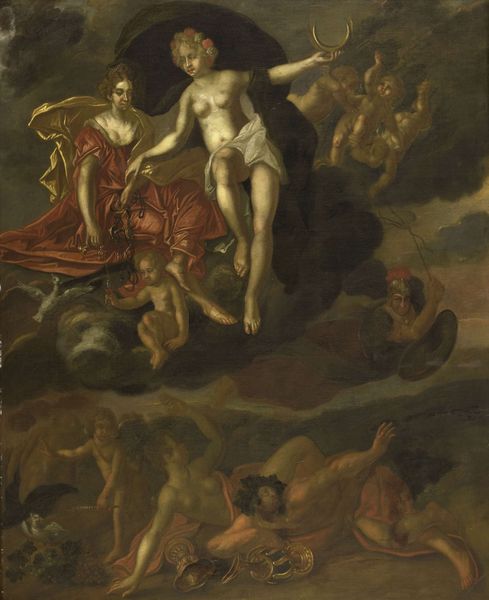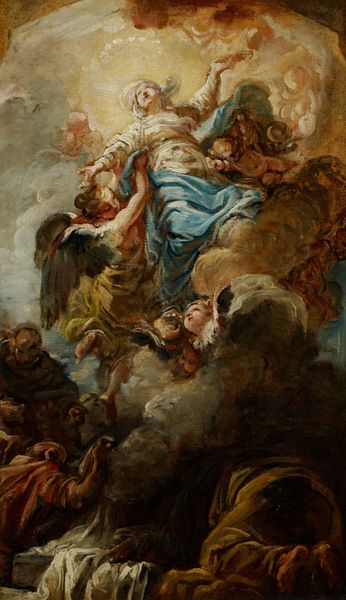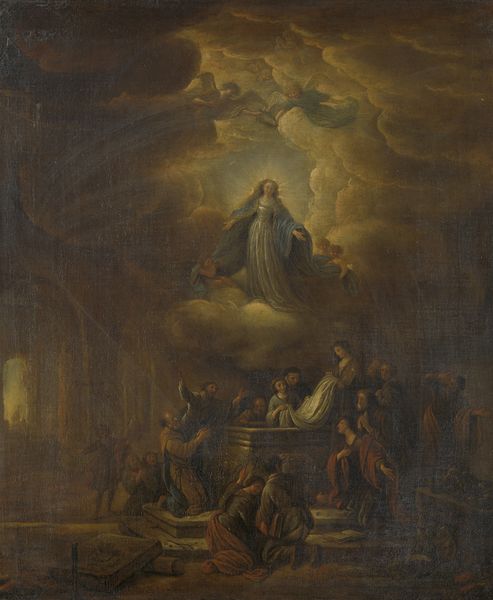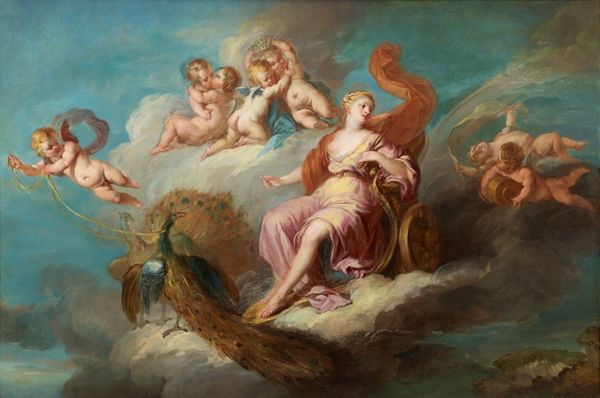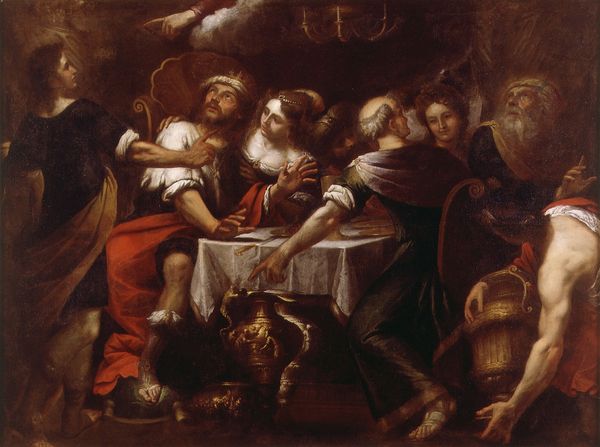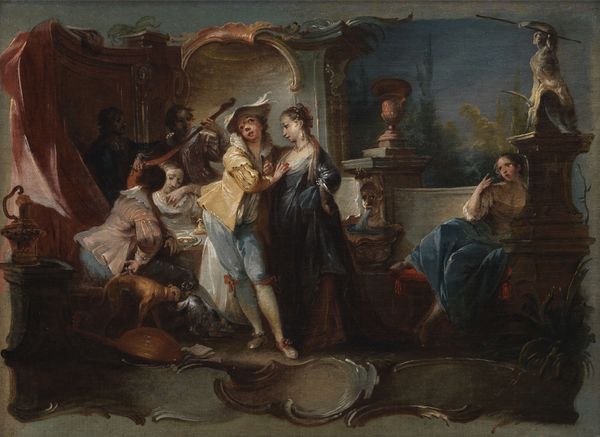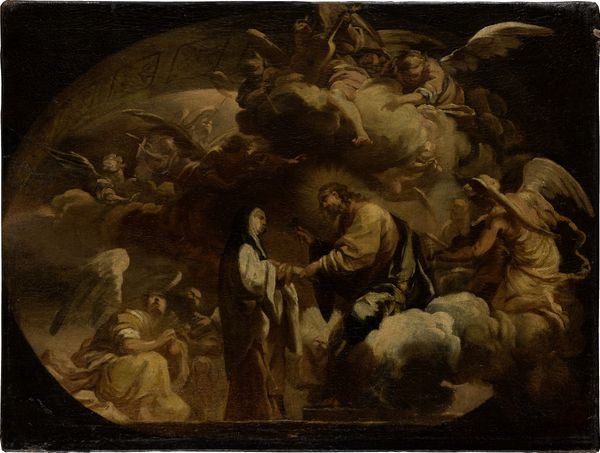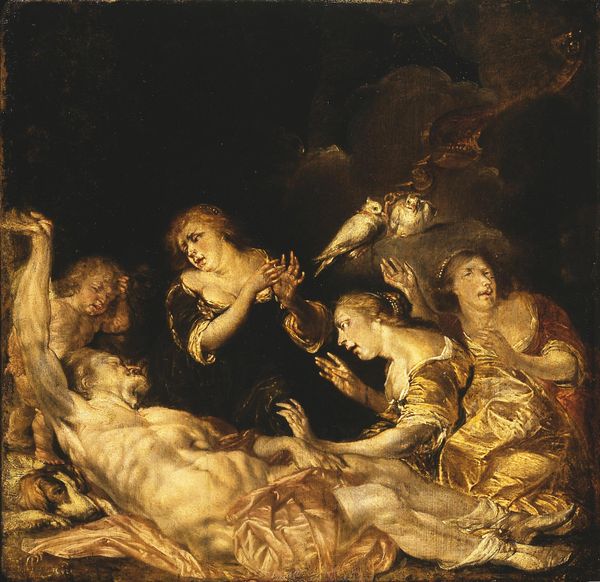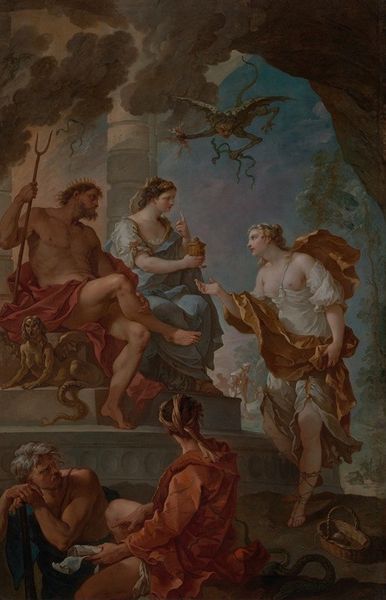
painting, oil-paint
#
narrative-art
#
baroque
#
painting
#
oil-paint
#
figuration
#
genre-painting
#
history-painting
Copyright: Public domain
Salomon Koninck created this oil painting, The Annunciation, in the Dutch Republic, sometime in the 17th century. Koninck has handled the oil paint in a way that really emphasizes the drama of the scene. Look at the angel, delicately modeled in bright tones that seem to emerge from the darkness. This chiaroscuro effect comes from building up thin glazes of paint, a technique mastered during the Renaissance and now widely practiced. You might think that Koninck was simply following convention, but this approach also served a social purpose. The Dutch Republic was a center of mercantile capitalism. Artists like Koninck needed to produce paintings efficiently to meet demand from a rising middle class. The use of oil paint, with its capacity for smooth blending and illusionistic effects, allowed for relatively quick production, especially when compared to older techniques like tempera or fresco. So, while The Annunciation depicts a sacred scene, its very making was embedded in the economic realities of its time. The materials and process, therefore, aren't just aesthetic choices, but clues to the broader cultural landscape.
Comments
No comments
Be the first to comment and join the conversation on the ultimate creative platform.


